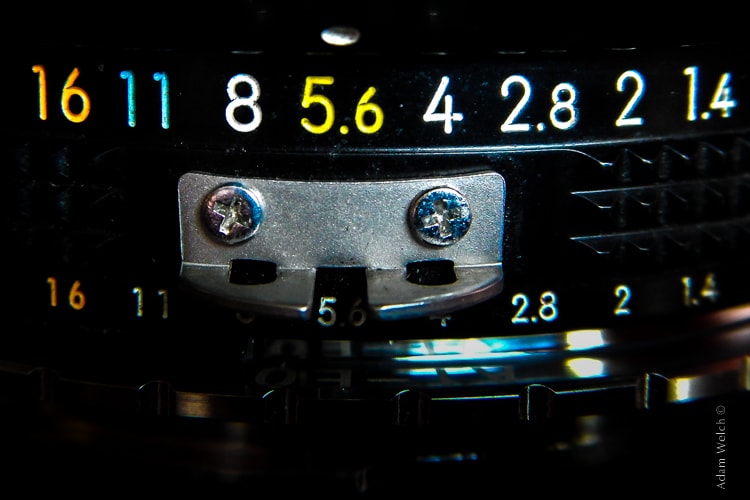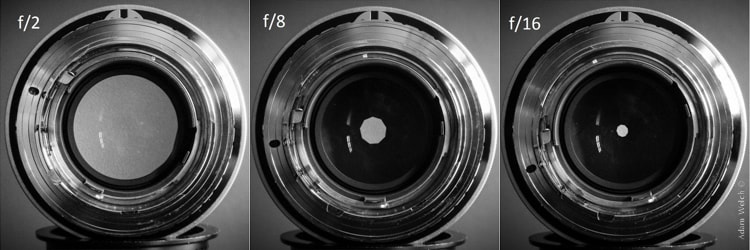Everything You Need To Know About Aperture
Perhaps there are few concepts in photography that cause more confusion for new photographers. Aperture, by definition, simply means some type of opening, a hole, or a gap. As it relates to us in the photographic world, aperture refers to the size of the opening in our lenses which light is allowed to pass through and interact with our image receptor (film, digital sensor, glass plates, etc.)
It is measured in “f-numbers” or “f/stops” or even “f-ratios“. It is what is referred to as a “dimensionless number“, which is a concept brilliantly termed and wholly mind-numbing in itself. This misovercomplicatedness (creating words is fun) is where understanding the basics of aperture can become slightly intimidating for the uninitiated and at times even for the more seasoned photography folk.
After reading this article, your understanding of how apertures and their selection affect a photograph will become much more clear and less of a source of technical intimidation. Those little numbers won’t seem like such a big problem anymore!

Let’s start at the beginning with what is admittedly one of the most daunting and unfortunately enigmatic characteristics of aperture and that is that elusive concept of the “f/stop“. The “f” just stands for “focal” and it is simply a ratio.
The ratio describes the size of the opening in the lens as it relates to the focal length of whatever lens you happen to be using. The blasphemous complication is that it is not an intuitive concept. Common logic might dictate that the larger the opening, then naturally the larger the f/stop. The opposite is true. The larger the opening in the lens means the f/stop will be smaller. I say again…the larger the opening…the smaller the f/stop. And the same is true on the other end of the spectrum. A large f/stop means that the aperture is actually smaller. So f/22 is a smaller aperture than f/16.
This brings us to the second somewhat confusing aspect of aperture and that is the control aperture size holds over depth of field. Depth of field or more relatably depth of focus, of course, is the area of focus in a particular image. It can be thought of as an area that has a literal “depth” where everything which does not fall into that certain range is blurred. It is actually quite useful to think of depth of focus in terms of being deep or shallow. Though crucial to controlling depth of field, the role aperture plays can be somewhat overstressed especially when it comes to just how blurred the foreground and backgrounds of photographs are concerned.
Much of this blurring is just as dependant on the relative distances between the lens, subject, and foreground/background as it is on aperture selection. That is not to say that aperture doesn’t play an essential role in controlling depth of focus. Luckily, this concept is quite easy to understand. The smaller f/number that is used, the more shallow the depth of focus becomes. The larger the f/number used, the deeper the depth of focus.
Take a look at these photos which were made using three different apertures. Note that in the following images, each time I decreased the aperture I also decreased my shutter speed to compensate in order to achieve a proper exposure. We’ll talk more about the relationship between aperture and exposure in just a moment.
With a large aperture of f/2, the field of focus is very shallow. Only the first subject falls into focus.

As we move to f/8 the field of focus deepens and the second subject falls into the range of focus.

Lastly, we decrease the aperture to f/16. This places all three subjects into focus.

A key factor to remember about aperture control is the relationship between f/stops and overall exposure. The smaller the aperture, which would be a larger f/number, also means that less light is entering through the opening of your lens. Conversely, the larger the aperture, which is a smaller f/number, means that more light is able to enter through the lens. The result is that with small apertures a longer shutter speed or a higher ISO is required to reach a desired exposure than would be needed with a larger aperture.
The take-away point to remember here is that with an increase in your f/number comes a decrease in shutter speed or an increase of ISO in order to maintain a constant exposure. So, an aperture of f/8 will require a longer shutter speed or ISO than an aperture of f/2 and an aperture of f/16 will need a longer shutter speed or ISO than f/8. This is admittedly an oversimplification and doesn’t take into account the aperture scale being used(full-stop, half-stop, third-stop) but for our purposes it demonstrates the affect aperture has on shutter speed selection and exposure in general.
Now let’s look at these three different aperture sizes. It becomes obvious why less light is able to enter through the opening as the f/number increases.

Congratulations! You have made it through the dark valley of abject confusion and grief that is aperture! Once you understand the basic principles of aperture the entire concept becomes much less daunting. You are now well on your way to taking control of your images and becoming a better photographer. Before you go, here is a recap of five key points to remember about basic aperture control.
- As the f/number increases the physical size of the aperture decreases.
- As the f/number decreases the area in focus also decreases.
- As the f/number increases the area of focus also increases.
- As the f/number increases less light is allowed to come through the lens.
- As the f/number decreases more light is allowed to come through the lens.
Now go out and flex your newfound photographic muscles!
